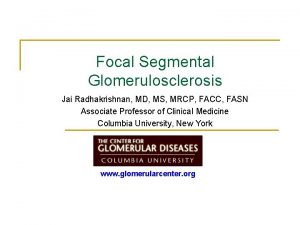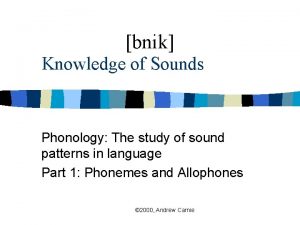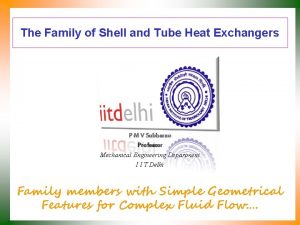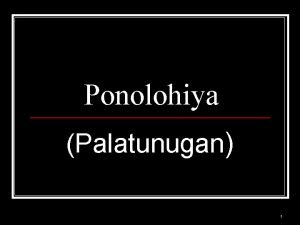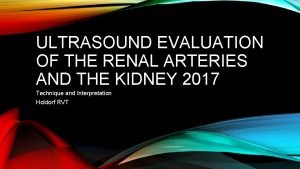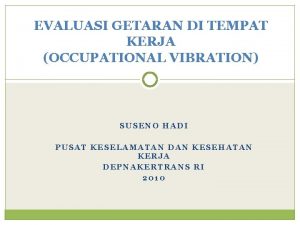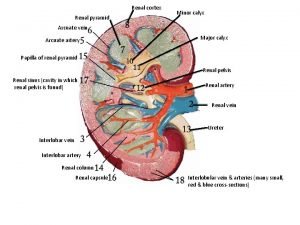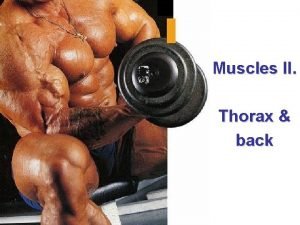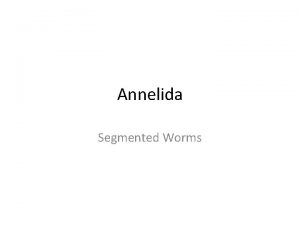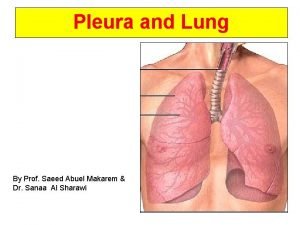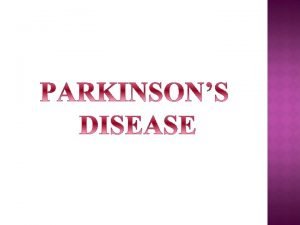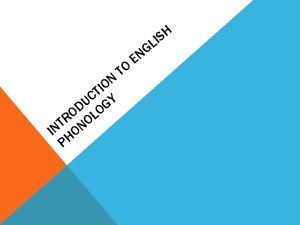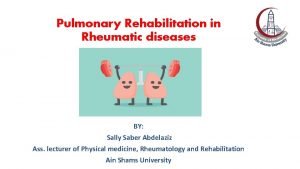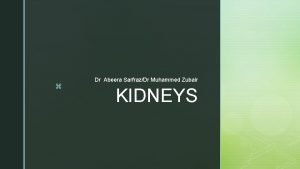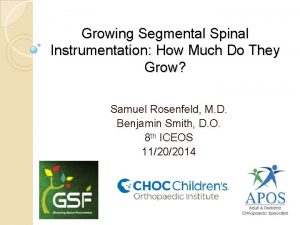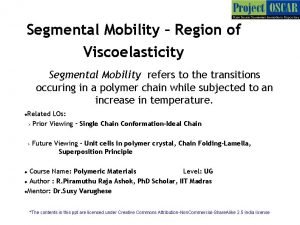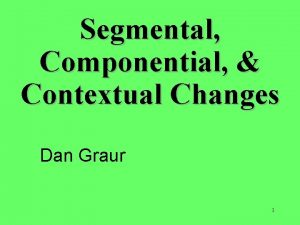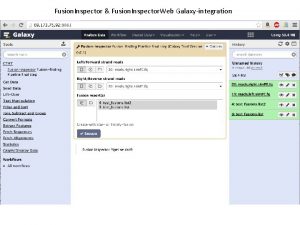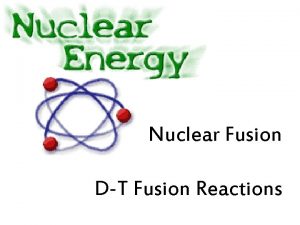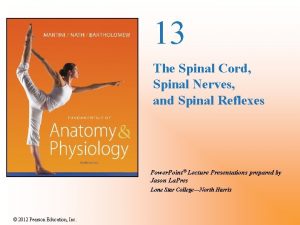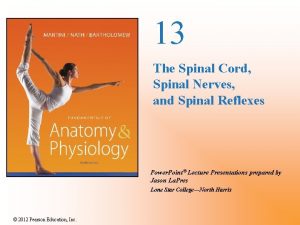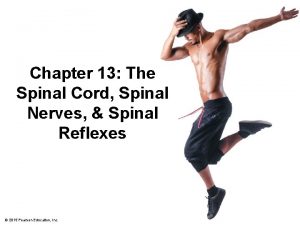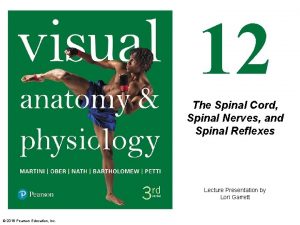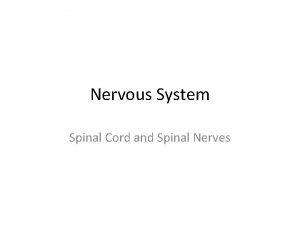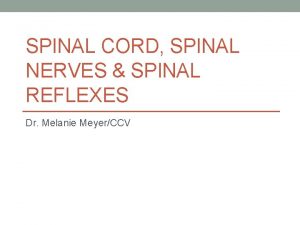Growing Segmental Spinal Instrumentation Without Fusion in Spinal




















- Slides: 20

Growing Segmental Spinal Instrumentation Without Fusion in Spinal Muscular Atrophy Samuel R. Rosenfeld, MD CHOC Childrens Hospital ICEOS November 15 -16, 2012

Background v Spinal deformity is commonly associated with SMA. – neuromuscular type in which the pelvic obliquity is proportional to the severity of the curve – early onset – progresses rapidly prior to the onset of puberty v Respiratory impairment is common in SMA. – restrictive lung disease advances simultaneously with the progression of the spinal curvature.

Purpose To report the long term follow up of a series of patients with spinal muscular atrophy whose neuromuscular scoliosis was treated surgically by growing posterior segmental spinal instrumentation without fusion with only ONE surgical intervention

v Nine patients with Spinal Muscular Atrophy underwent segmental spinal instrumentation without fusion. There were three boys and six girls. Three patients had SMA-1 and six patients had SMA-2. The average at surgery was 6 years, 11 months. On average, 15 spinal segments were instrumented and fixation was carried out to the pelvis. No post-operative spinal orthosis was utilized. Radiographs were evaluated for correction of deformity, spinal growth, and evidence of hardware failure.

Surgical Technique v A standard posterior approach v Subperiosteal dissection of the lamina was carried laterally to the facet joints which were preserved. v Sublaminar cables were passed at each level v Two paired stainless steel unit rods were cut and contoured for maximal curve correction, normal sagittal alignment, and secured in the illium

Surgical Technique v A crosslink was placed at the caudal end of the construct v The cephalad rod ends were left long – To Allow spinal growth along the construct, and – Obviate the need for further lengthening surgeries v Postoperative bracing was not utilized

v Results: Follow-up averaged 75 months. The mean preoperative scoliosis measured 57 degrees and the mean postoperative scoliosis measured 32 degrees. At the final follow-up, the scoliosis measured 32. 4 degrees. Normal sagittal alignment was maintained in all patients. On average, 15 segments were instrumented. Spinal growth from T 1 to S 1 averaged 3. 6 cm. over the study period. There were 2 surgical infections responding to debridement and antibiotics that did not interfere with continued spinal growth. One patient required revision of the pelvic fixation.

Demographics Age at surgery (months) Follow-up (months) Cobb angle pre-op Cobb angle post-op PJK Growth (cm. / yr. ) complications � SMA 2 127 124 48° 38° 16° 1. 4 none � SMA 2 59 175 44° 30° 12° 2. 2 none � SMA 2 80 123 68° 55° 45° 1. 3 none � SMA 1 82 116 50° 42° 2° 1. 2 Revision pelvic fixation � SMA 1 85 92 76° 35° 17° 2. 0 none � SMA 2 81 12 47° 8° 9° 1. 6 none � SMA 2 99 8 25° 6° 8° 0. 7* none � SMA 2 72 16 33 ° 6° 10° 1. 4 Deep infection � SMA 2 63 19 31° 8° 10° 1. 3 Superficial infection

Surgery age 9 years

2 years post op

9 years post op

Surgery age 4 years

6 years post op

13 years post op

Surgery age 7 years

Post op

7 months post op

6 years post op

v Conclusions: Segmental Spinal Instrumentation without fusion is a safe and effective procedure when treating the spinal deformity associated with Spinal Muscular Atrophy. In this group of patients, scoliosis correction and sagittal alignment were maintained while allowing for continued growth without the use of external immobilization. None of these patients exhibited progressive restrictive pulmonary disease during treatment. Complications did not interfere with the spinal growth or compromise the instrumentation.

Take Home Points v Growing Segmental Spinal Instrumentation without fusion is a well-tolerated & effective surgical technique that avoids the morbidity associated with multiple surgeries in this very fragile patient subset
 Our old trusty truck cranial nerves
Our old trusty truck cranial nerves The spinal nerves
The spinal nerves Exercise 15 spinal cord and spinal nerves
Exercise 15 spinal cord and spinal nerves Spinal cord layers
Spinal cord layers Leukocytoclastic vasculitis
Leukocytoclastic vasculitis Causes of focal segmental glomerulosclerosis
Causes of focal segmental glomerulosclerosis Whats an allophone
Whats an allophone Tubesheet heat exchanger
Tubesheet heat exchanger Tono halimbawa
Tono halimbawa Non segmental phonology
Non segmental phonology Segmental artery
Segmental artery Contoh whole body vibration
Contoh whole body vibration Major and minor calyces
Major and minor calyces треугольник пти
треугольник пти Spoon worm anatomy
Spoon worm anatomy Liver anatomy and physiology
Liver anatomy and physiology Segmental bronchi
Segmental bronchi Festinating gait definition
Festinating gait definition Segmental phonology
Segmental phonology Dyspnea scale
Dyspnea scale Segmental artery
Segmental artery





